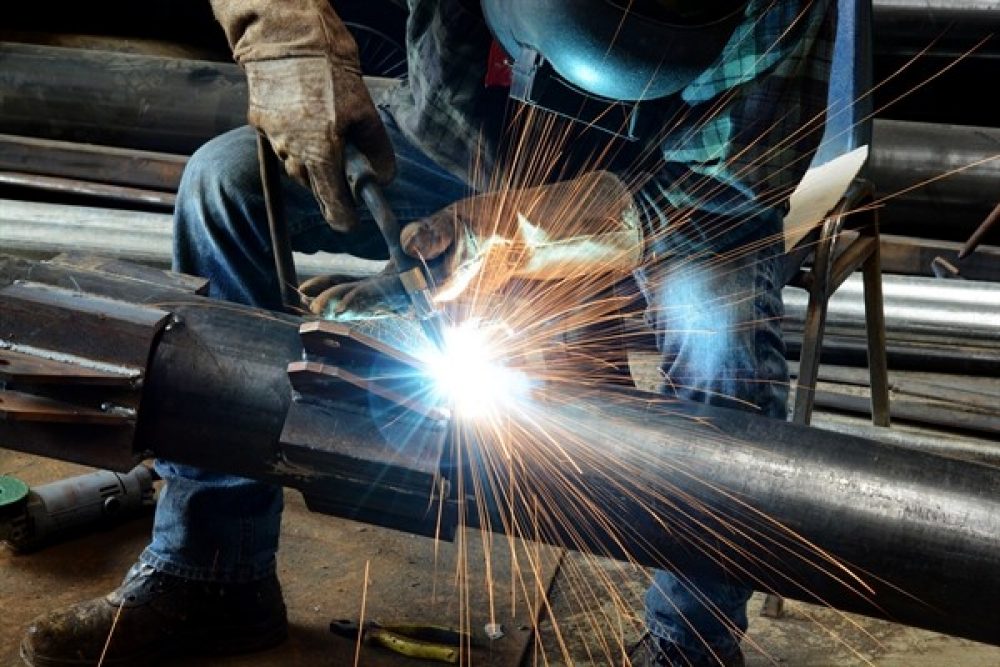Comprehending Welding WPS: Comprehensive Overview for Welders
Comprehending Welding WPS: Comprehensive Overview for Welders
Blog Article
The Ultimate Overview to Welding WPS Procedures: An Extensive Introduction for Welders
In the intricate world of welding, Welding Treatment Specs (WPS) function as the backbone of making sure quality, uniformity, and safety and security in welding operations. Recognizing the subtleties of developing, implementing, and checking WPS treatments is essential for welders aiming to elevate their craft and meet industry standards. As we look into the various parts of a WPS and explore the complexities of certification and certification, we will reveal the vital duty these treatments play in the world of welding. Let's start a trip to unwind the intricacies and value of WPS procedures in welding practices.
Significance of WPS Procedures
Understanding the importance of Welding Procedure Specifications (WPS) treatments is essential for making sure the high quality and integrity of bonded frameworks. WPS treatments offer as a roadmap for welders, describing the necessary steps, parameters, and products needed to achieve an audio weld. By sticking to WPS guidelines, welders can guarantee uniformity in their job, leading to reputable and structurally audio welds.
One of the key reasons why WPS procedures are crucial is their function in keeping weld quality and stability. Adhering to the specified welding specifications and methods described in the WPS assists protect against problems such as porosity, splitting, or insufficient combination, which can endanger the toughness and sturdiness of the weld.
Components of a WPS
A Welding Treatment Requirements (WPS) generally comprises important parts that information the particular demands for carrying out a weld, making sure consistency and quality in the welding procedure. The essential elements of a WPS include important variables such as base metals, filler steels, preheat and interpass temperatures, welding processes, shielding gases, welding placements, and post-weld warm treatment needs.
Base metals refer to the products being signed up with, while filler metals are utilized to fill up the void between the base steels throughout welding. The welding procedure describes the certain technique to be utilized, whether it's gas steel arc welding (GMAW), secured steel arc welding (SMAW), or another method. Welding positions define the positionings in which welding can be performed.

Certification and Qualification
Having actually developed the essential parts of a Welding Treatment Requirements (WPS), the emphasis currently changes in the direction of the essential aspects of certification and accreditation in welding methods.

Qualification, on the other hand, is the official recognition of a welder's certifications by a relevant accreditation body or company. Welding qualifications are typically based on the particular welding procedures, products, and settings a welder is certified to deal with. Holding a legitimate welding qualification demonstrates that a welder meets sector standards and is qualified to execute welding tasks to the called for specifications.
Developing a WPS
To develop a Welding Treatment Requirements (WPS) that fulfills sector criteria, cautious factor to consider of welding procedures, products, and operational specifications is crucial. The initial step in creating a WPS is to determine the welding procedure to be utilized, such as gas steel arc welding (GMAW) or protected steel arc welding (SMAW)

Implementing and Keeping Track Of WPS
Upon wrapping up the extensive Welding Procedure Spec (WPS) that thoroughly information welding procedures, products, functional specifications, and high quality guarantee measures, the focus shifts to properly carrying out and checking the well-known treatments. Execution involves making sure that all welders associated with the task recognize with the WPS and follow it meticulously during the welding process. This needs offering ample training and guidance to assure adherence to the specified treatments. Click Here Checking the WPS entails constant oversight to confirm that welding tasks line up with the documented specifications. Assessments, screening, and top quality control procedures are necessary elements of the tracking procedure to determine any concerns or deviations without delay. Routine audits and evaluations of the welding treatments aid in keeping uniformity and quality throughout the job. Reliable execution and tracking of the WPS are important for ensuring the honesty, toughness, next page and safety and security of the welded joints, ultimately adding to the general success of the welding project.
Verdict
In final thought, understanding and following Welding Treatment Specifications (WPS) is crucial for welders to make sure top quality, consistency, and safety and security in their work. By knowing the elements of a WPS, getting correct credentials and certifications, producing in-depth treatments, and implementing and monitoring them properly, welders can enhance their skills and efficiency in welding methods. Complying with WPS treatments is vital for producing high-grade welds and meeting industry criteria.
In the detailed globe of welding, Welding Procedure Specifications (WPS) serve as the backbone of guaranteeing quality, uniformity, and safety and security in welding procedures. The welding procedure details the details technique to be used, whether it's gas metal arc welding (GMAW), shielded metal arc welding (SMAW), or an additional method.To establish a Welding Procedure Specification (WPS) that meets industry requirements, careful consideration of welding processes, materials, and functional criteria is necessary. The first action in producing a WPS is to recognize the welding procedure to be utilized, such as gas metal arc welding (GMAW) or shielded steel arc welding (SMAW)Upon completing the extensive Welding Procedure Spec (WPS) that diligently details welding processes, materials, functional criteria, and quality guarantee actions, the Full Article emphasis changes to properly carrying out and checking the well-known treatments.
Report this page